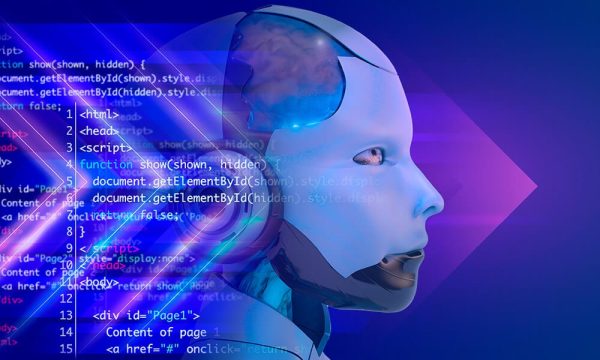Have you ever talked to a virtual assistant like Siri or Alexa and marveled at how they seem to understand what you’re saying? Or have you used a chatbot to book a flight or order food and been amazed at how the machine knows precisely what you want? These experiences rely on a technology called Natural Language Understanding, or NLU for short.
With the rise of chatbots, virtual assistants, and voice assistants, the need for machines to understand natural language has become more crucial. And this is where Natural Language Understanding (NLU) comes into play. In this article, we’ll delve deeper into what is natural language understanding and explore some of its exciting possibilities.
What is Natural Language Understanding (NLU)?
Natural Language Understanding (NLU) is a subfield of natural language processing (NLP) that deals with computer comprehension of human language. It involves the processing of human language to extract relevant meaning from it. This meaning could be in the form of intent, named entities, or other aspects of human language.
NLP aims to examine and comprehend the written content within a text, whereas NLU enables the capability to engage in conversation with a computer utilizing natural language.
How does Natural Language Understanding (NLU) work?
NLU works by processing large datasets of human language using Machine Learning (ML) models. These models are trained on relevant training data that help them learn to recognize patterns in human language.
The training data used for NLU models typically include labeled examples of human languages, such as customer support tickets, chat logs, or other forms of textual data.
The first step in NLU involves preprocessing the textual data to prepare it for analysis. This may include tasks such as tokenization, which involves breaking down the text into individual words or phrases, or part-of-speech tagging, which involves labeling each word with its grammatical role.
After preprocessing, NLU models use various ML techniques to extract meaning from the text. One common approach is using intent recognition, which involves identifying the purpose or goal behind a given text. For example, an NLU model might recognize that a user’s message is an inquiry about a product or service.
Let’s take a closer look at an example of NLU in action.
Imagine you’re asking Siri for directions to a nearby coffee shop. You might say, “Hey Siri, where’s the closest coffee shop?”
Without NLU, Siri would match your words to pre-programmed responses and might give directions to a coffee shop that’s no longer in business. But with NLU, Siri can understand the intent behind your words and use that understanding to provide a relevant and accurate response. This article will delve deeper into how this technology works and explore some of its exciting possibilities.
Natural language understanding applications
IVR and Message Routing
Interactive Voice Response (IVR) systems are automated phone systems that interact with customers through pre-recorded voice prompts and menus. IVR systems use NLU to recognize spoken responses and route callers to the appropriate department or agent.NLU also helps IVR systems understand natural language inputs, enabling customers to speak their queries rather than navigating through menus.
Customer Support
NLU has transformed the customer support experience, making it faster and more efficient. Chatbots and virtual assistants can handle many customer queries and provide immediate responses 24/7.Using natural language processing and machine learning, chatbots can understand customer queries and provide relevant answers. This technology also enables chatbots to learn from customer interactions, improving their responses.
Machine Translation
NLU plays a crucial role in machine translation (a branch of AI), which is translating text from one language to another using computers.NLU has revolutionized machine translation by enabling the development of neural machine translation (NMT) models.
NLU is essential in NMT models, as it helps to improve the quality of machine translations. It enhances the model’s ability to understand the meaning and intent behind the source text.
For example, When a user employs an automatic language tool like a dictionary to translate information, it simply substitutes words on a one-to-one basis. On the other hand, with machine translation, the system examines the words in their proper context, facilitating the production of a more precise translation.
Data Capture
NLU captures and extracts relevant data from unstructured data sources such as social media, emails, and customer feedback.Data captured through Natural Language Understanding (NLU) is used in various ways, depending on the specific application or use case. Here are some examples:
- Intent classification: NLU can help determine the intent behind a user’s input, such as a text message or spoken command. This information can then be used to trigger the appropriate action or response.
- Entity recognition: NLU can identify entities within the user’s input, such as names, dates, locations, and other relevant information. This information can be used to provide more personalized and contextualized responses.
- Sentiment analysis: NLU can determine the sentiment or emotional tone of the user’s input, such as whether it is positive, negative, or neutral. This information can gauge customer satisfaction, identify improvement areas, and tailor responses accordingly.
Chatbots
Chatbots are designed to interact with users through text or voice, typically to simulate human conversation. Natural Language Understanding (NLU) is an essential component of conversational AI that allows them to understand and respond to user input in a human-like manner.For example, if a user types “I want to order a pizza,” the NLU system can identify the user’s intent to order food and extract important information such as the type of food (pizza) and possibly the desired toppings. The chatbot can then respond with options for pizza types and toppings.
Virtual Assistants
Virtual assistants are intelligent software agents that perform tasks or services for an individual using natural language interaction. NLU is a critical component of virtual assistants that allows them to understand and respond to voice commands.When a user speaks to a virtual assistant, the audio input is converted into text through Automatic Speech Recognition (ASR) technology. The resulting text is then sent to the NLU system for analysis.
The NLU system uses Intent Recognition and Slot Filling techniques to identify the user’s intent and extract important information like dates, times, locations, and other parameters. The system can then match the user’s intent to the appropriate action and generate a response.
For example, if a user says, “What’s the weather like today?” the NLU system can identify the user’s intent to get information about the weather and extract the parameter “today.” The virtual assistant can then provide the current weather conditions for the user’s location.
Conclusion
NLU has opened up new possibilities for businesses and individuals, enabling them to interact with machines more naturally. From customer support to data capture and machine translation, NLU applications are transforming how we live and work.
As technology advances, we can expect to see more sophisticated NLU applications that will continue to improve our daily lives.














